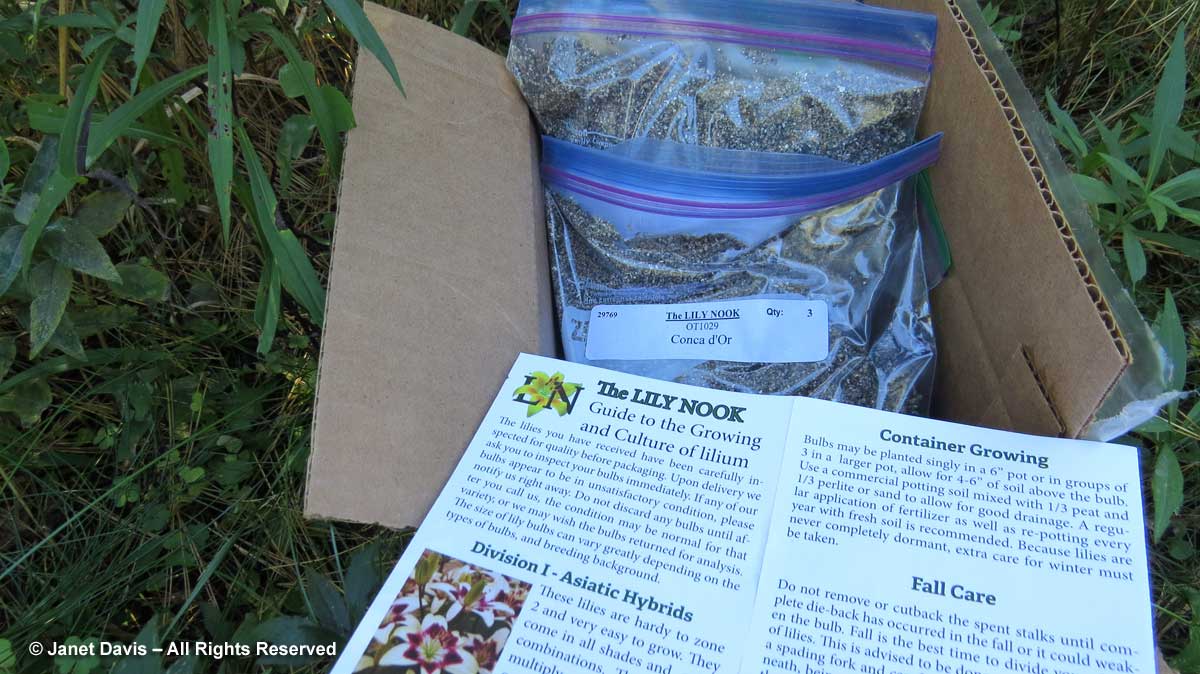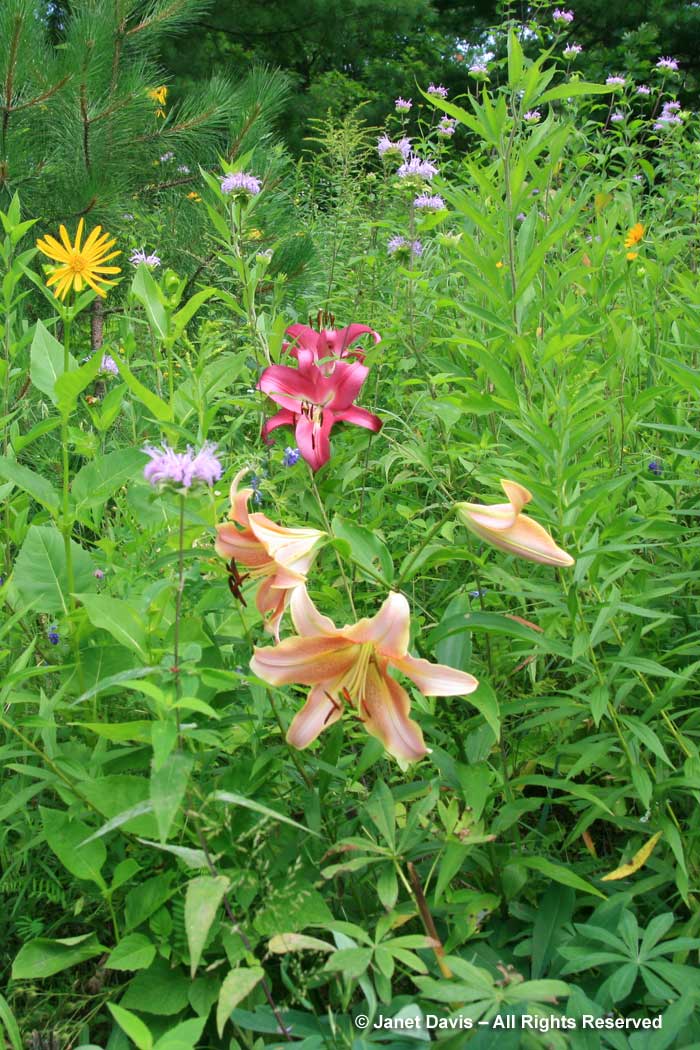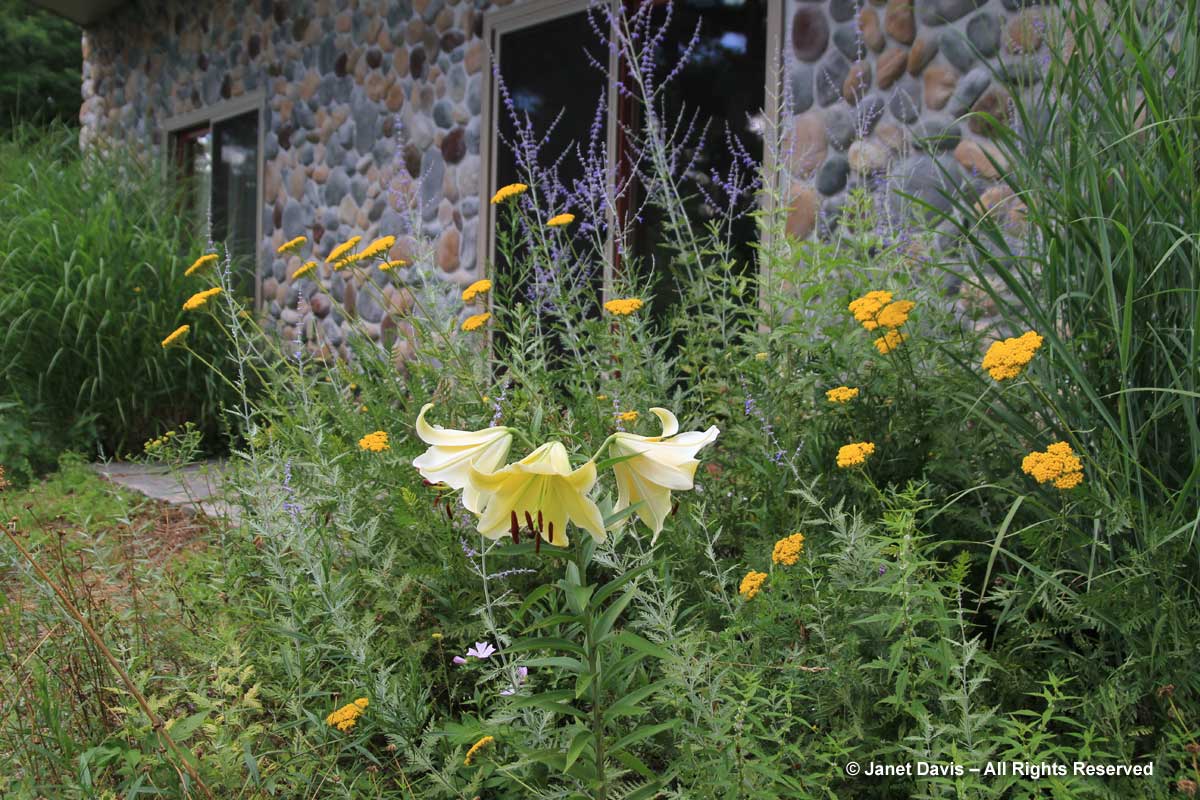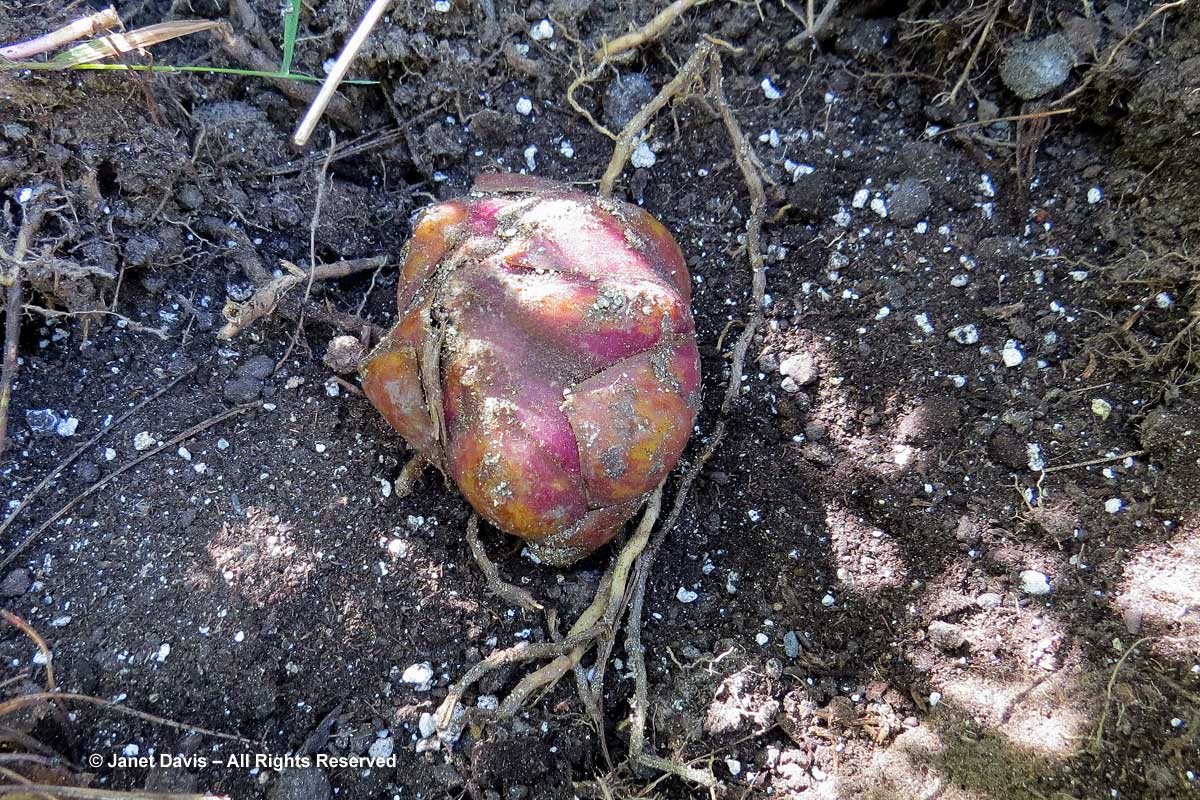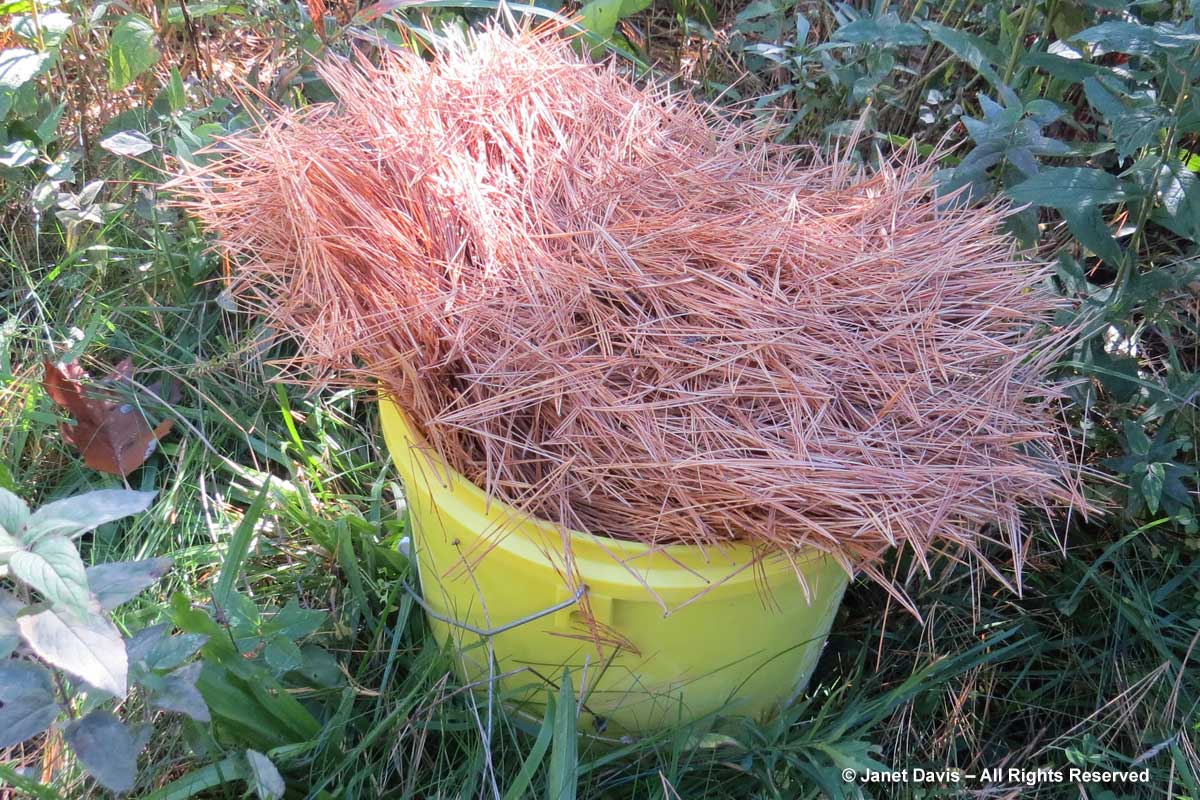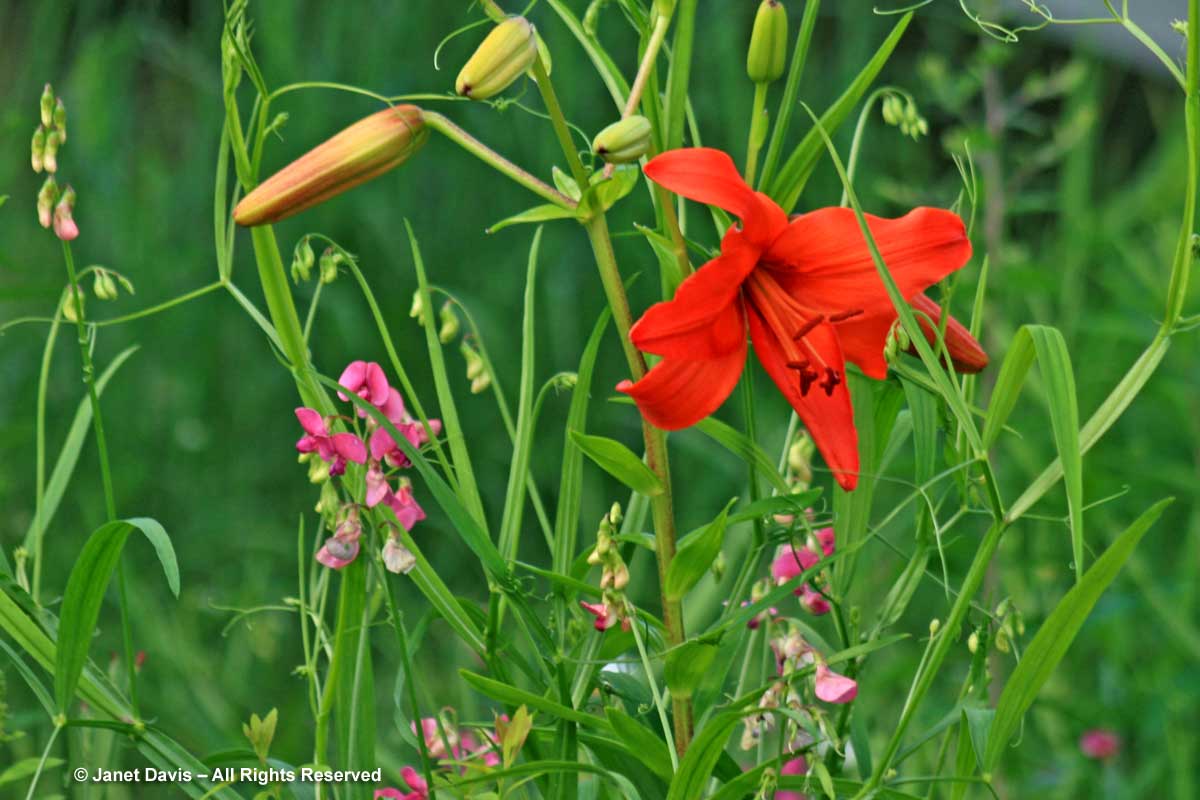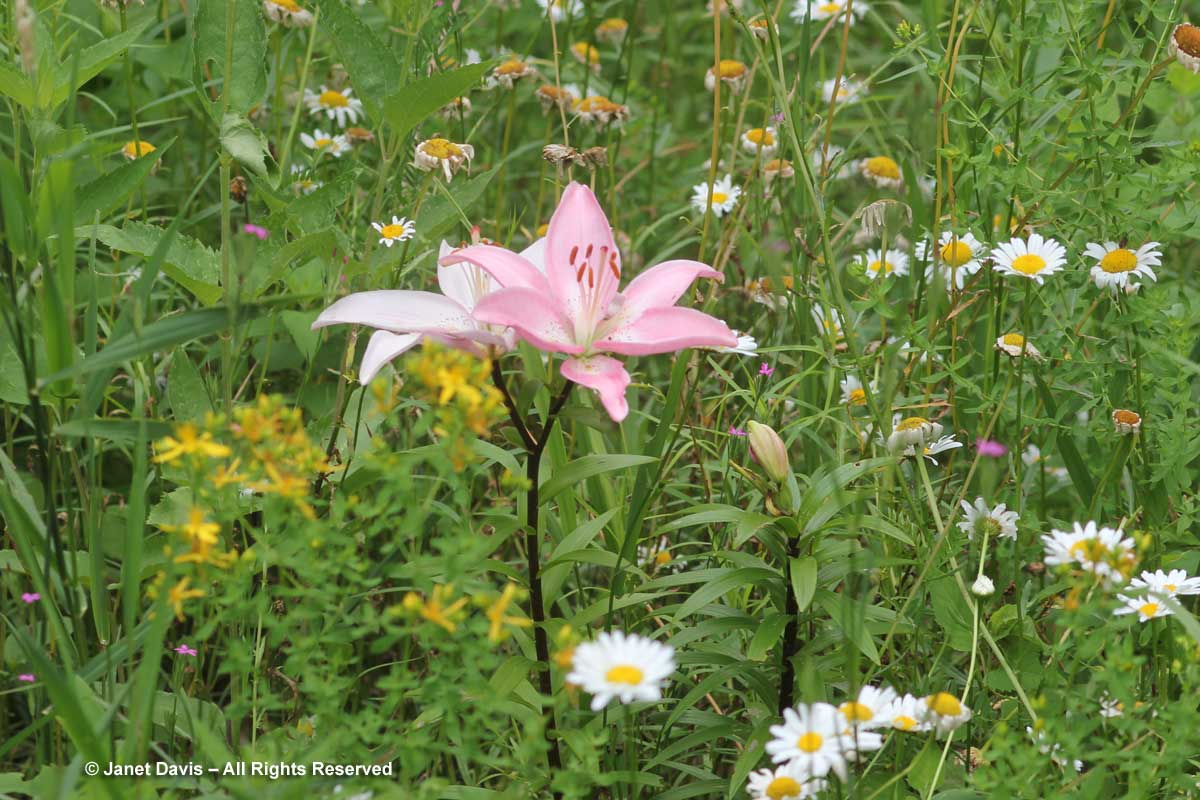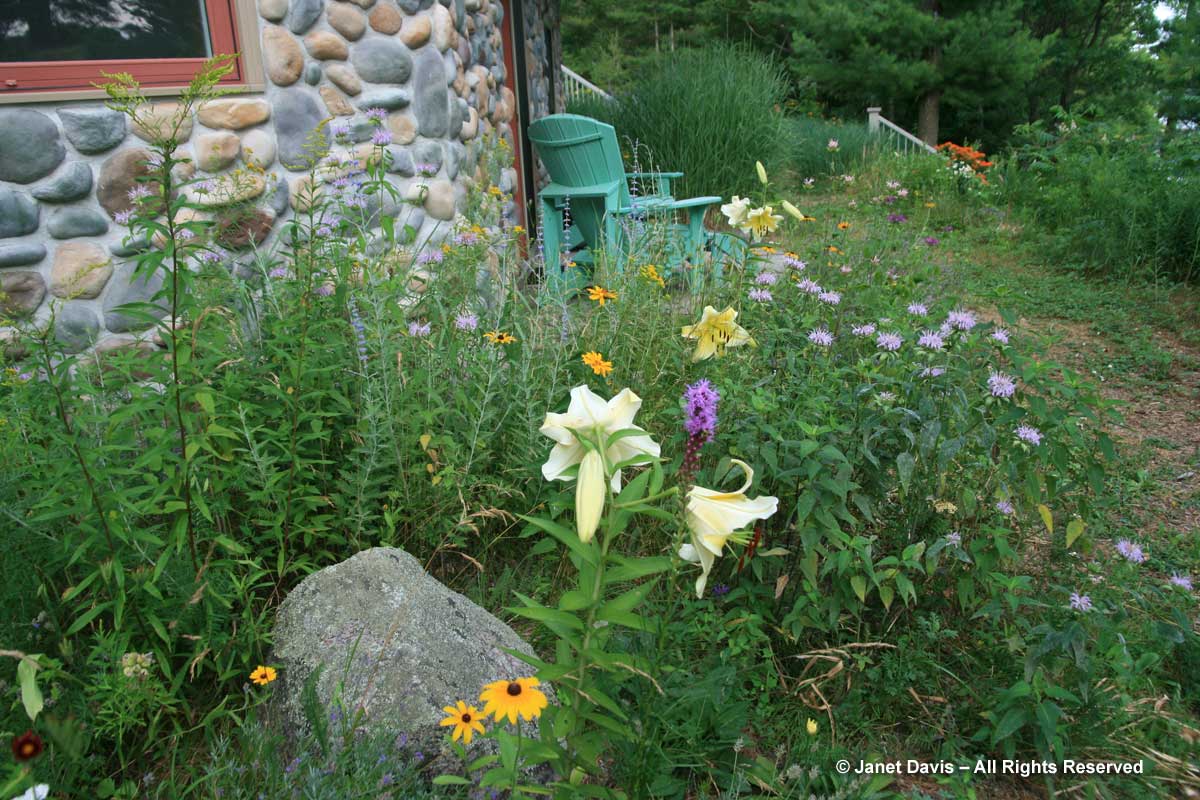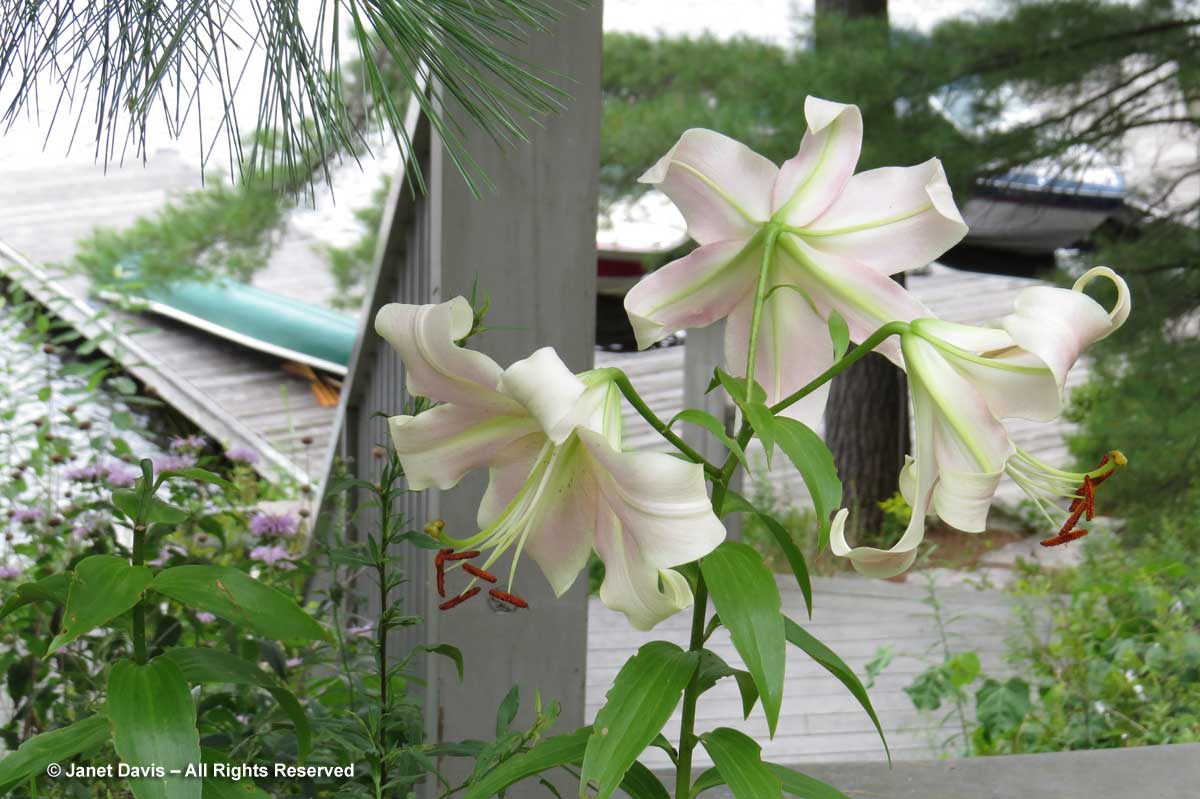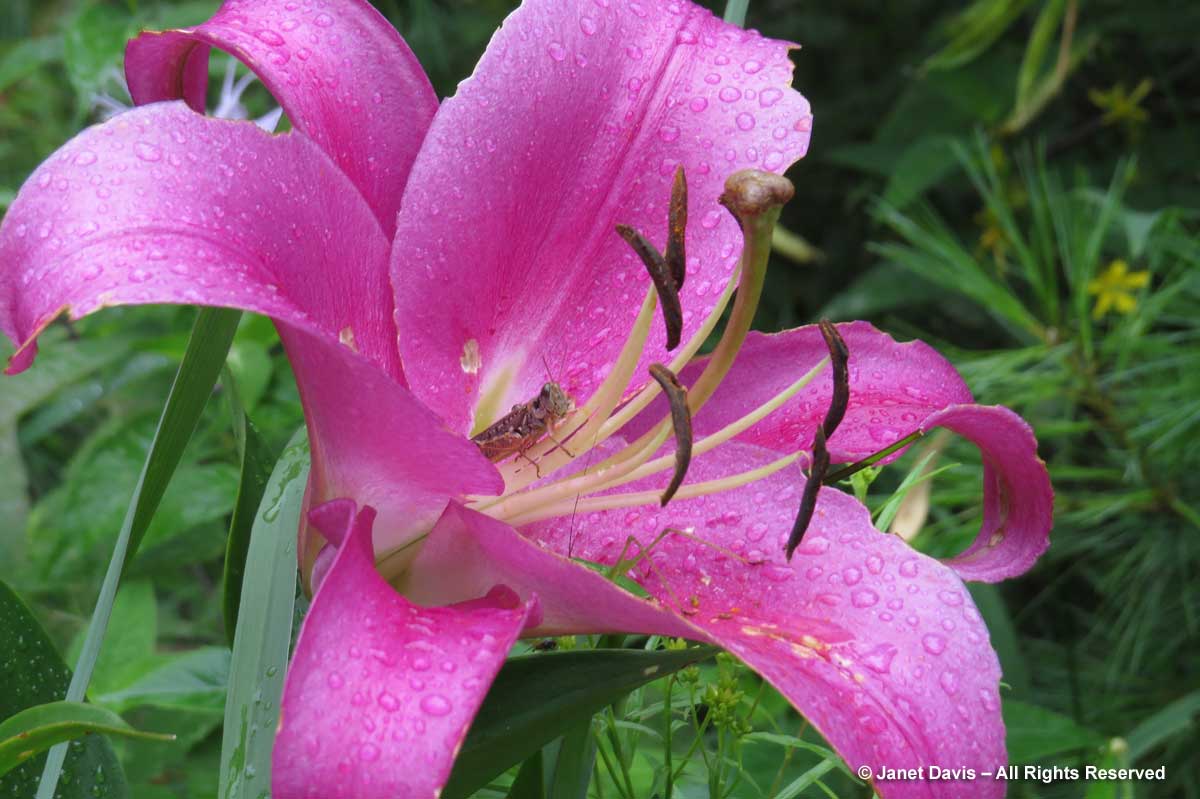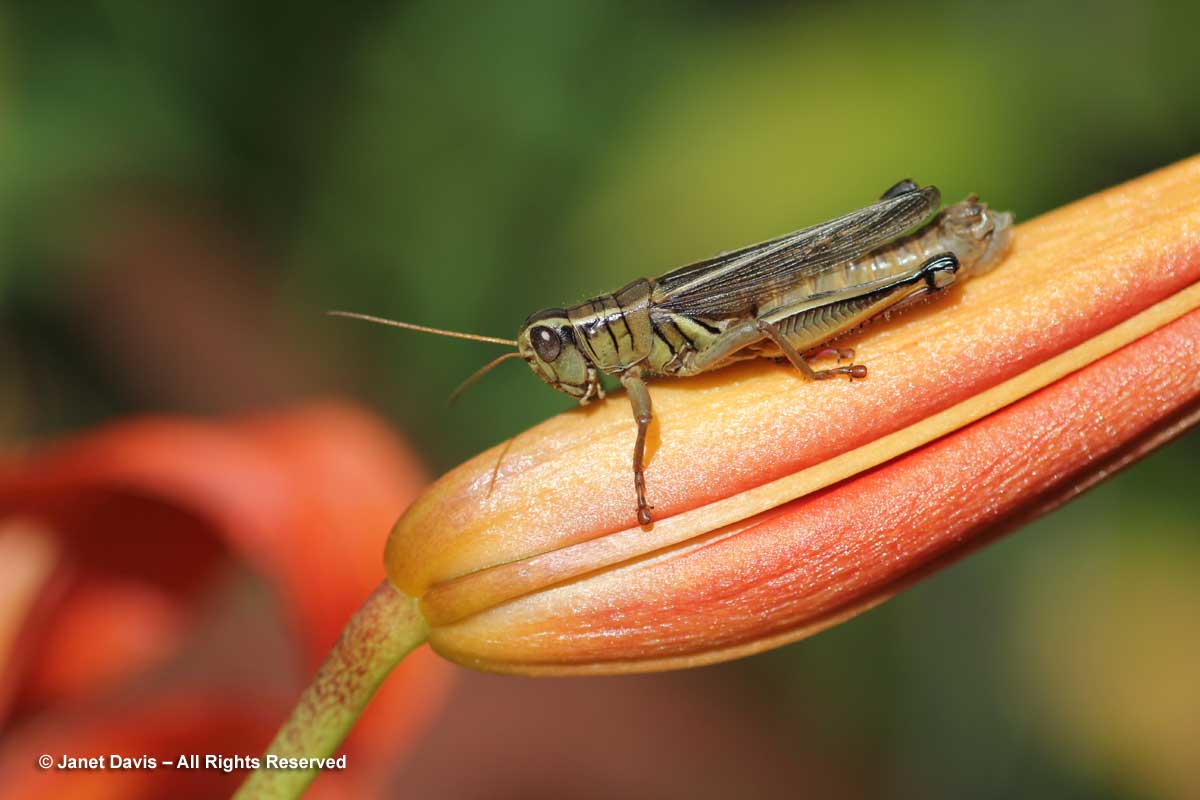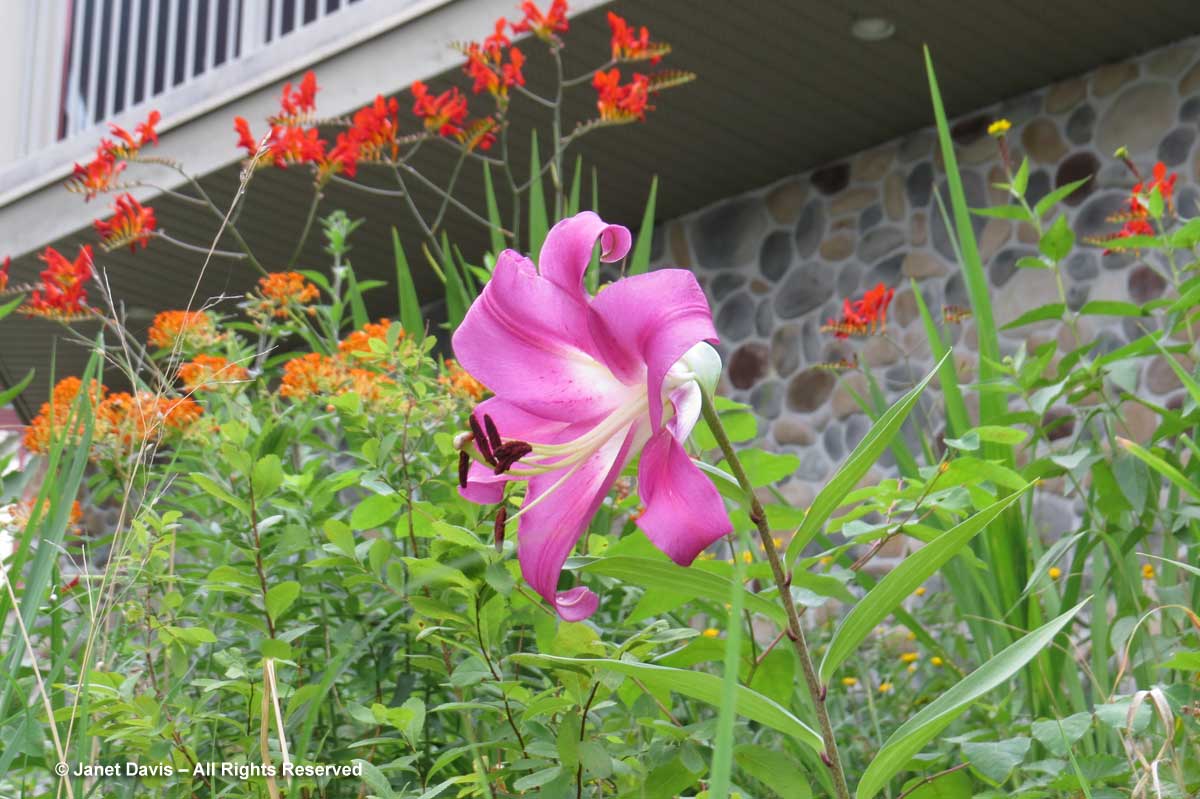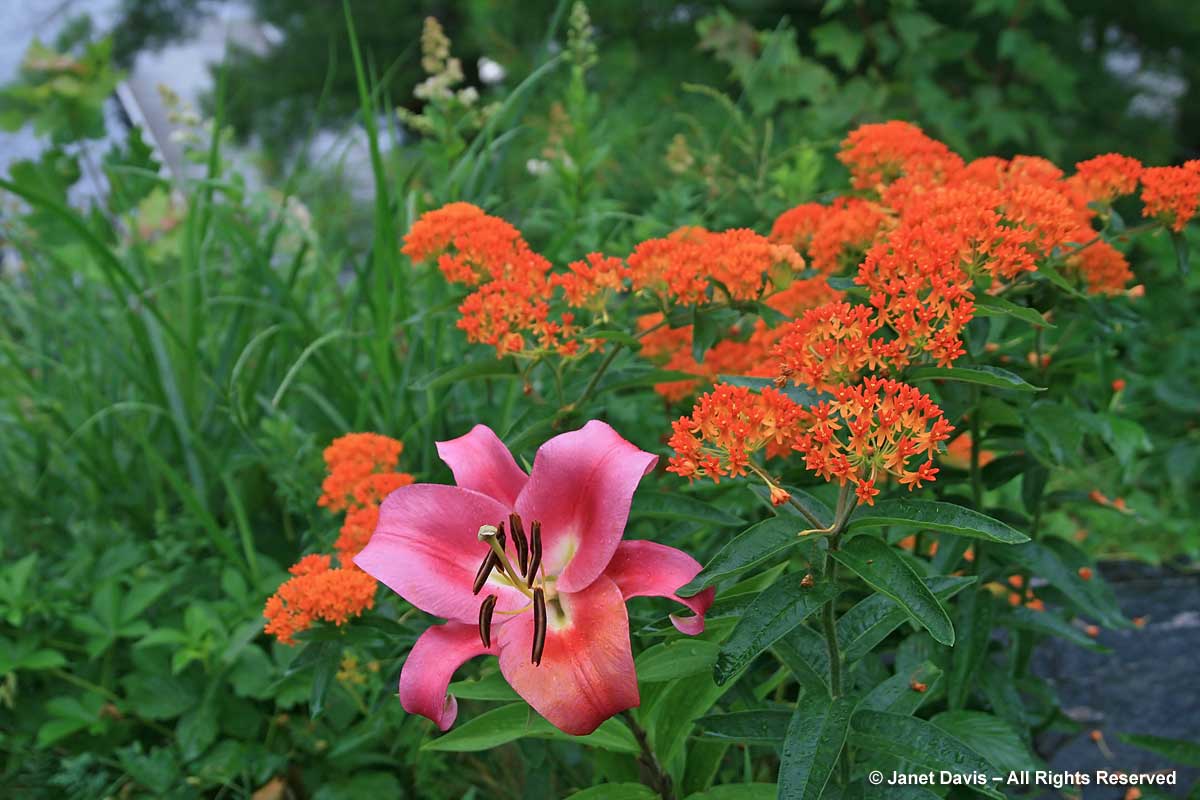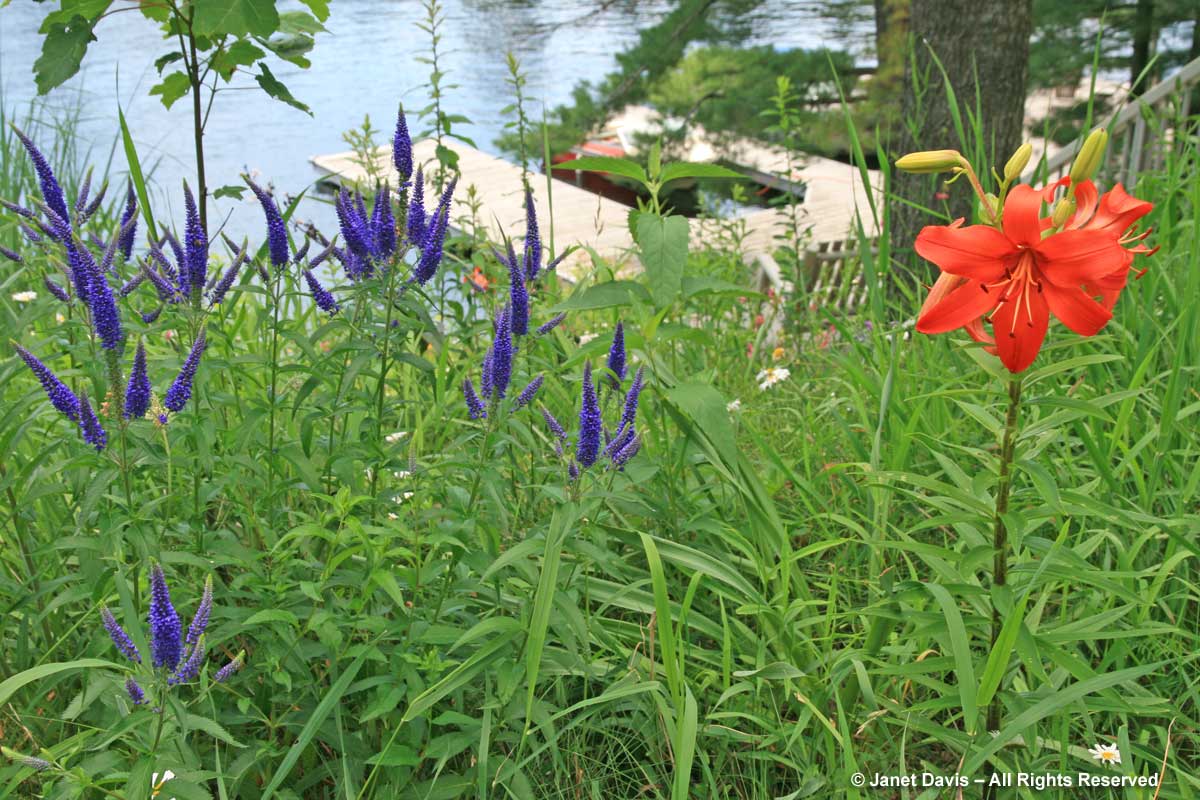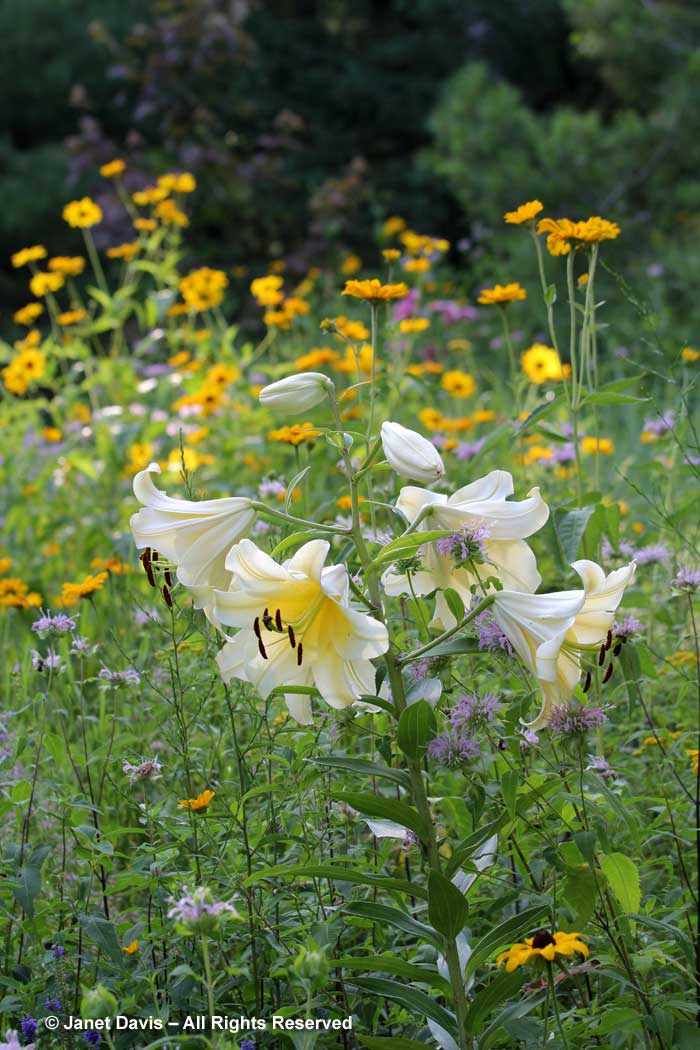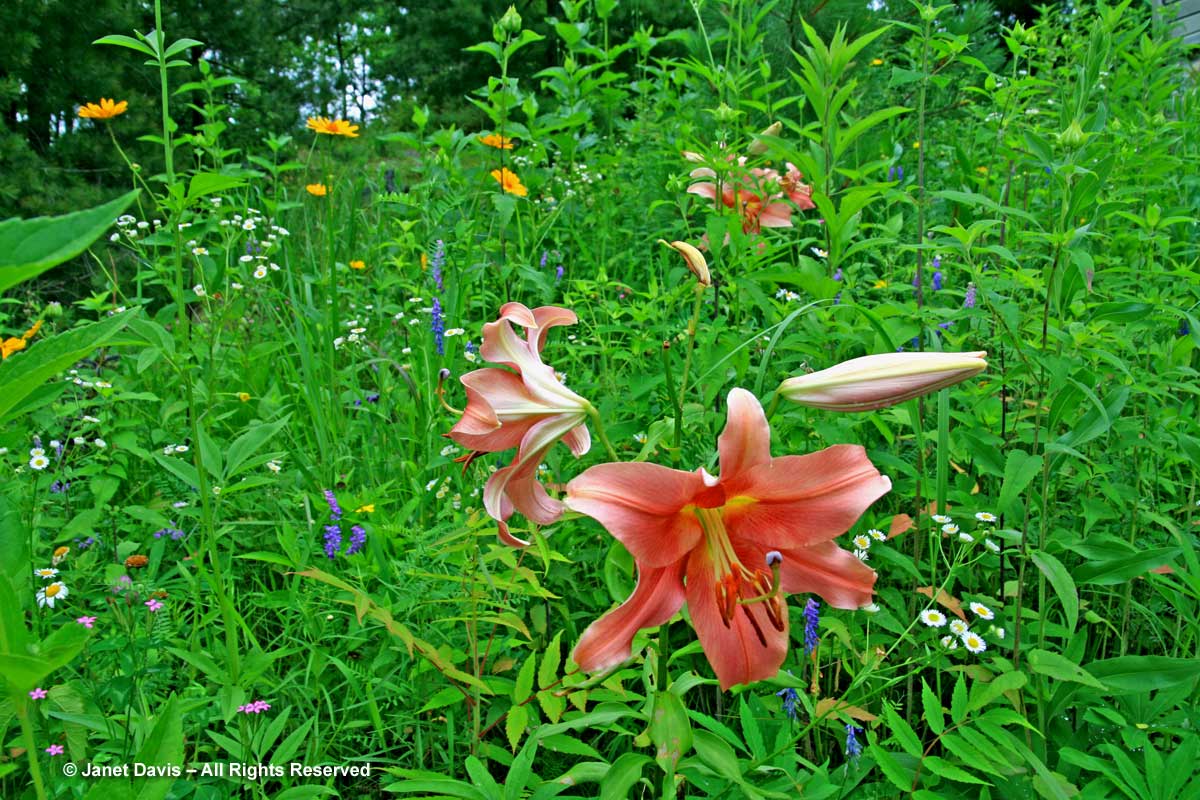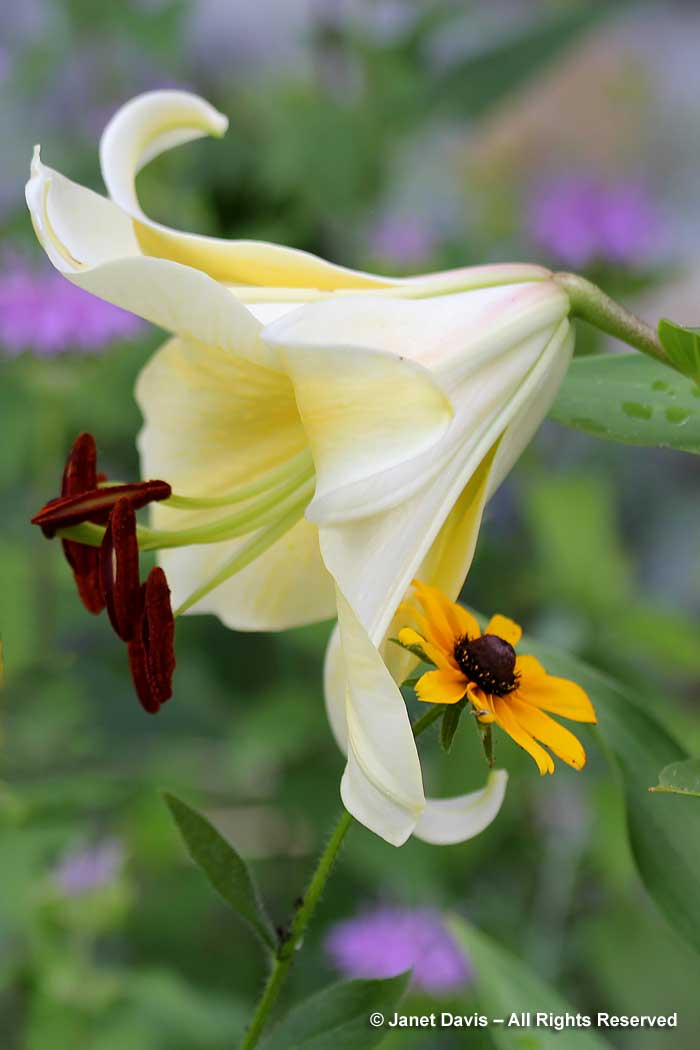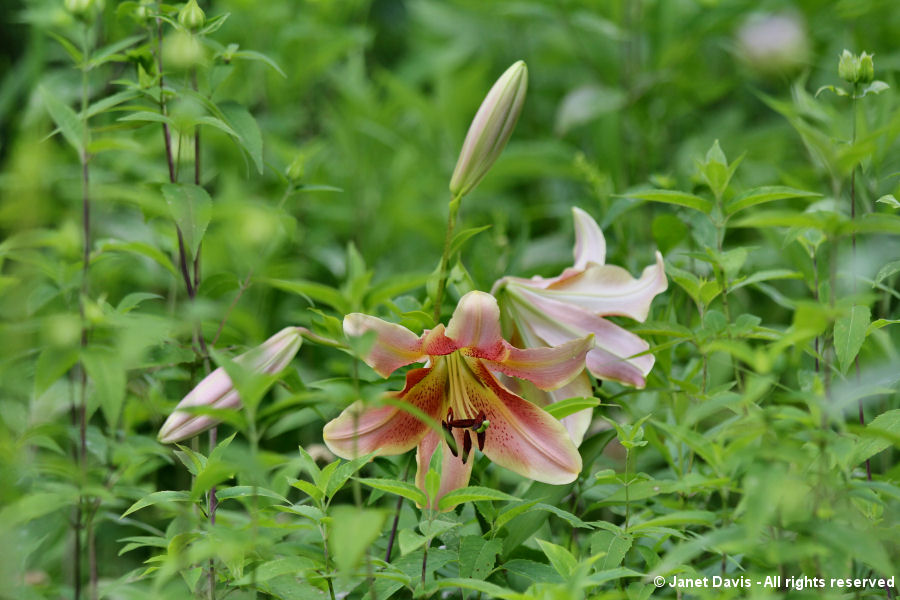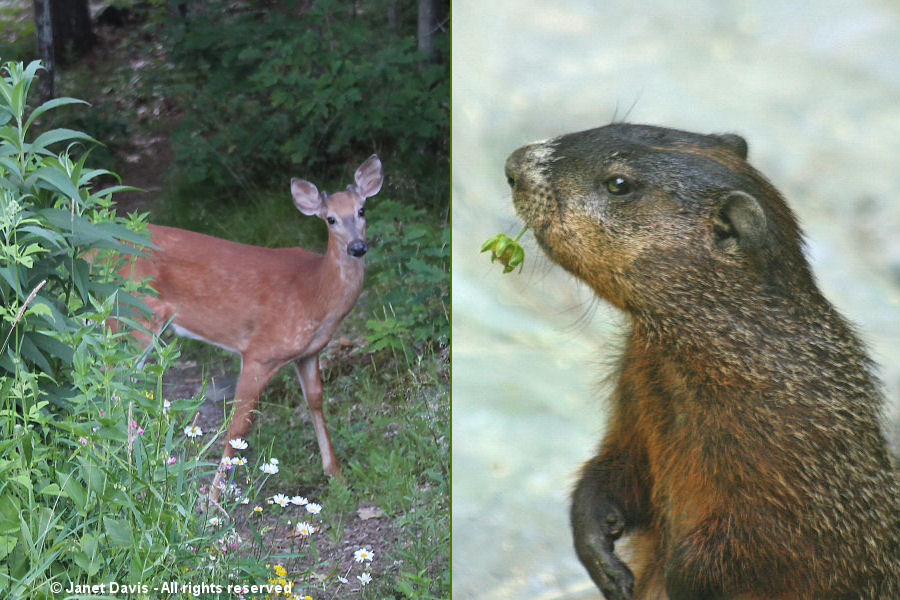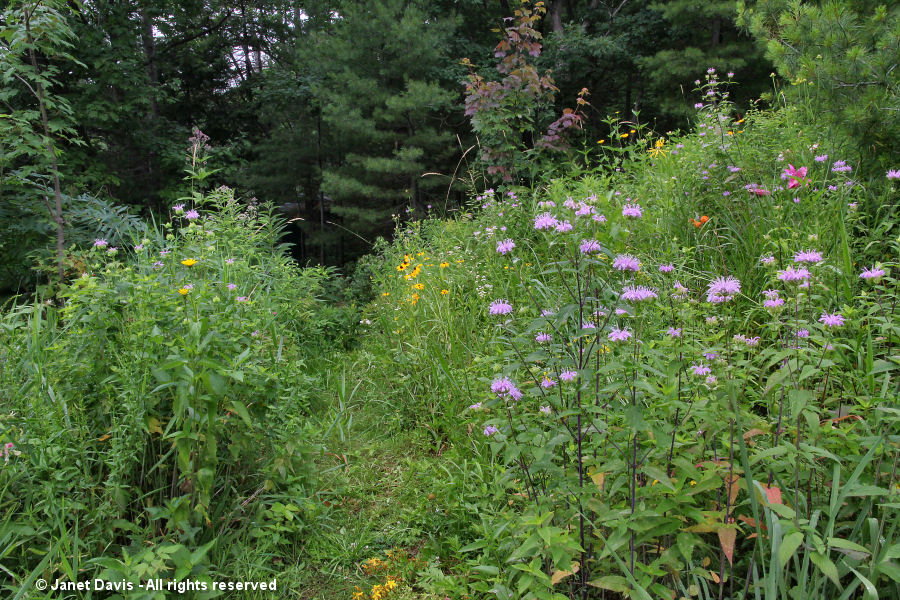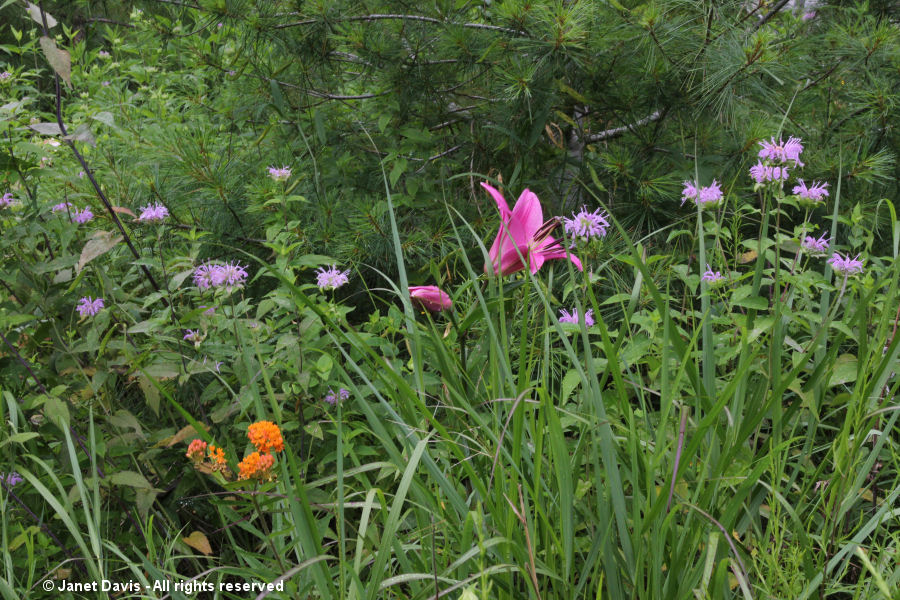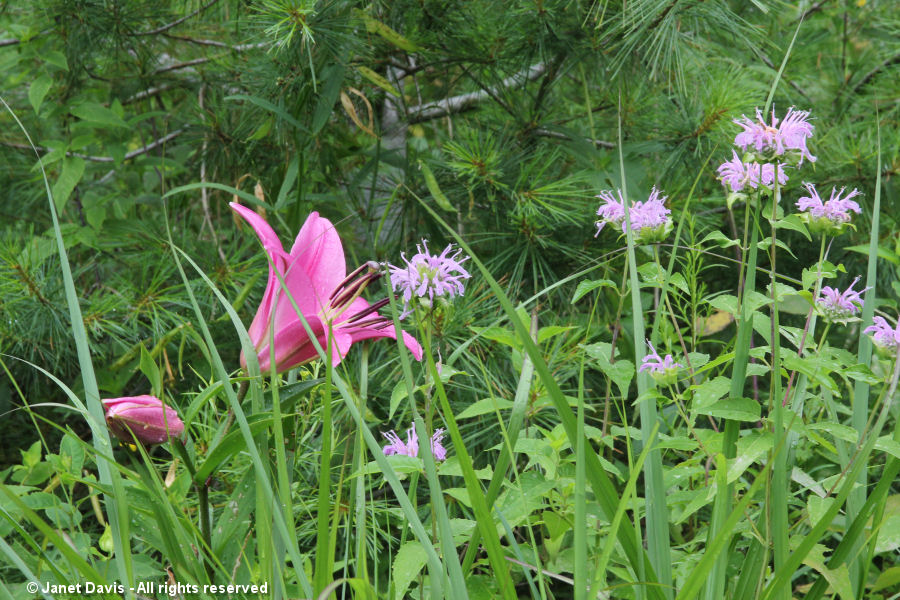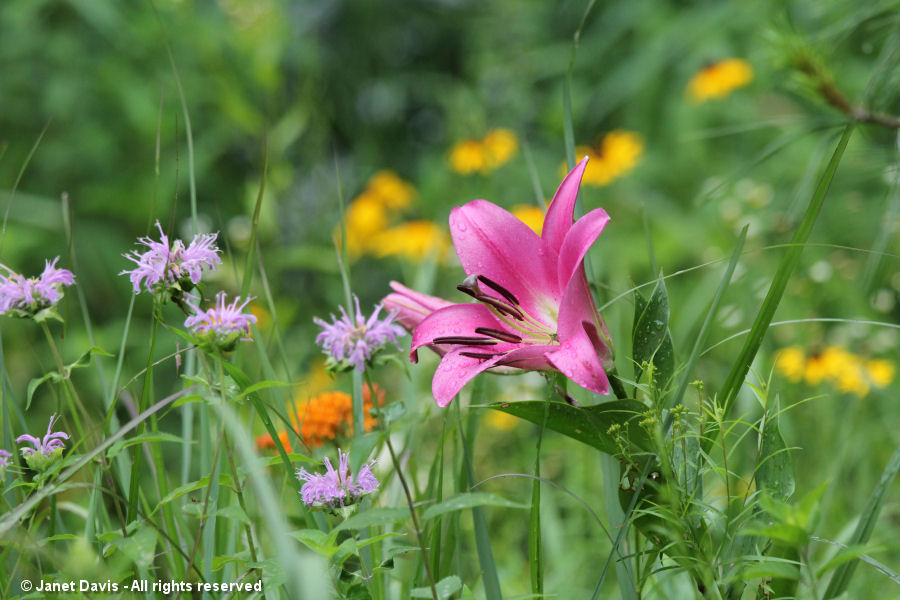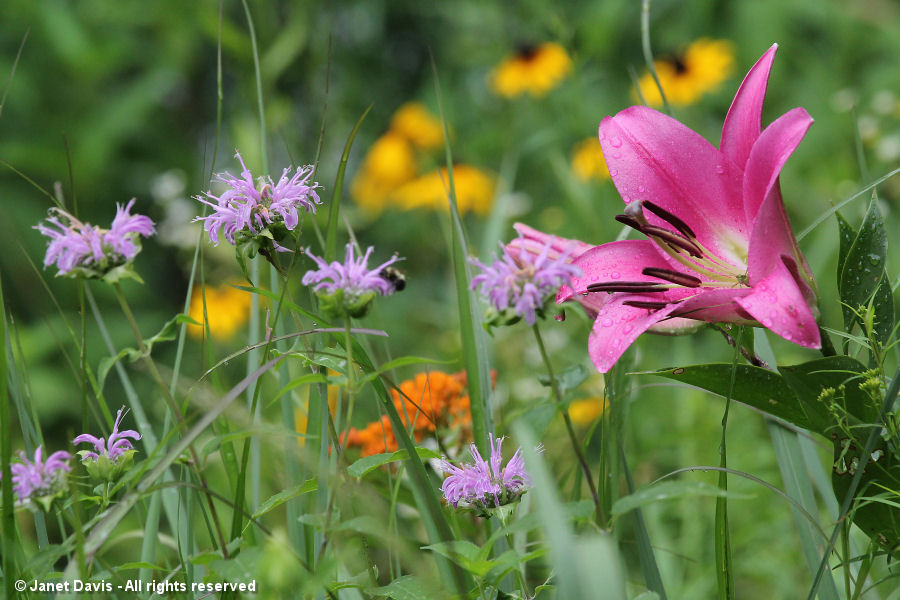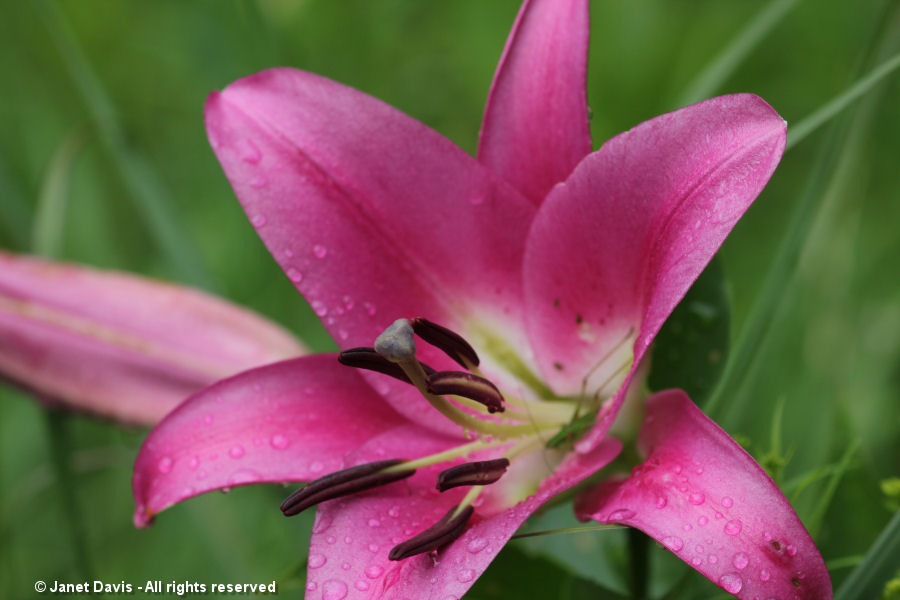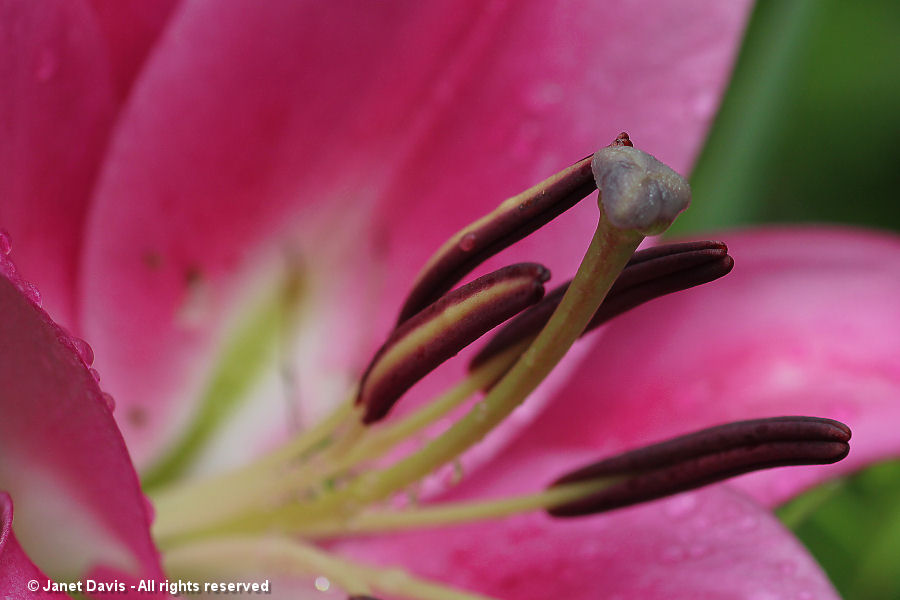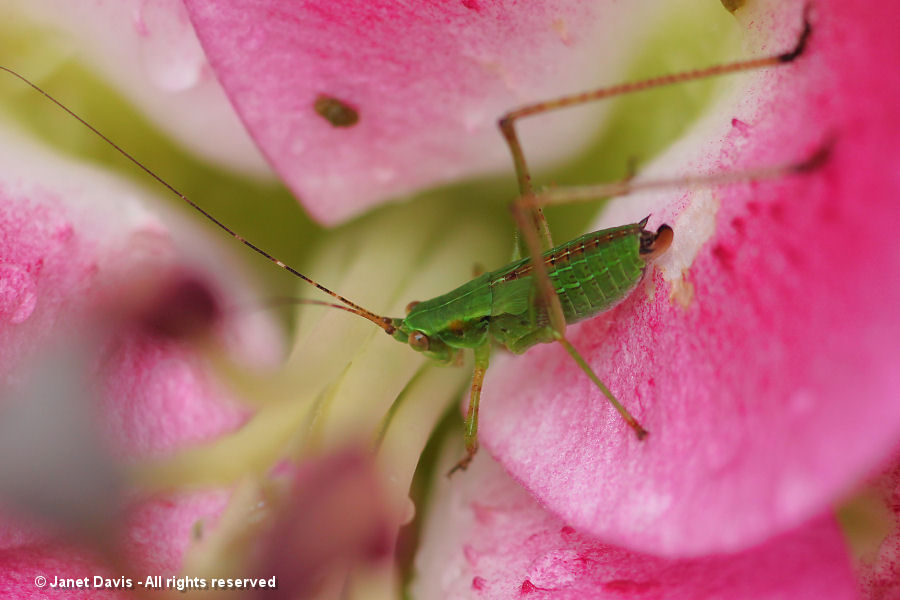I spent an hour on Thanksgiving weekend planting a dozen Orienpet lily bulbs in my meadow gardens at the cottage on Lake Muskoka. A deservedly popular group resulting from complex hybridizing of Oriental and Trumpet lilies, they came from the Lily Nook in Neepawa, Manitoba, which has been in the lily-breeding business for more than 30 years. The Lily Nook also sells popular lilies outside their own registry, offering 150 varieties through their catalogue. I’ve always been impressed with their service and the quality of their bulbs.
When I say I planted the bulbs in “meadow gardens”, I mean either one of two small fields on either side of the cottage, below, but also in….
..garden beds that I originally intended to keep somewhat tame, which have now been invaded by their wild meadow brethren. This is ‘Conca d’Or’ – my favourite Orienpet, with blue Russian sage (Perovskia atriplicifolia) and ‘Gold Plate’ yarrow (Achillea filipenulina)….
Planting lilies is easy, and much like planting spring bulbs such as tulips or daffodils. The difference is that lilies can be planted in either fall or spring, unlike spring-flowering bulbs which must be planted in autumn. Fall planting works well when autumns are long and relatively mild, allowing the bulbs to root nicely before freeze-up. In my case, there is no beautiful, rich soil to work; it is truly a mess of wild grass and wildflower or perennial roots and granite bed rock. I shifted my spade around to find 10-12 inches of clear soil, then dug out any roots I could and sifted the soil a little with my hands. I had a very small amount of seed-starting mix that I added to the hole (I would recommend a better soil, if you have it, to give a good start), then plunked the fat, scaled lily bulb on top. Lilies prefer rich, free-draining but reasonably moist soil.
I gathered a pail of pine needles, and after backfilling the hole with the bulb, I mulched the soil with the needles and watered everything well. Experts recommend mulching Orienpets in cold regions, but apart from the pine needles, I’ve relied on our generally guaranteed deep snow cover to get them through winter. The pine needle mulch at least guarantees a short time for the bulb to emerge in spring without encroachment by other plants.
And when I say encroachment, in meadow gardening it’s a given that life is cheek-to-jowl and plants must be able to survive in those conditions. Here’s the Asiatic lily ‘Pearl Justien’ with wild sweet pea (Lathyrus latifolius).
This year, I bought 3 bulbs each of pink ‘Tabledance’ (who makes these names up?) and ‘Esta Bonita’, three of ‘Northern Delight’ (soft melon orange) and three more of my fave: pale-yellow ‘Conca d’Or’. The Lily Nook always adds a free bonus bulb, usually an Asiatic. While they are lovely in my city garden, they don’t seem to take as well to the meadows at the lake. The one below faded away after a few years of rough living.
Orienpets have inherited the spicy fragrance of their pink and white Oriental parents and the swoony scent of the orange and yellow Trumpets. So I’m careful to site my lilies where their exquisite perfume can be enjoyed up close. That means near a sitting area, as with ‘Conca d’Or’, below…
…. or along a grassy path where walkers can enjoy inhaling. That’s peachy ‘Visa-Versa’ at the front, and the orange Asiatic ‘Pearl Justien’ in the rear.
…. or beside the stairs to the dock….
They are not immune to disease (especially after a rainy spring, when the stems and leaves can develop a blight) and certain little critters love them, especially red lily beetle (I don’t have many of these) and grasshoppers, like the ones below noshing on ‘Robina’ (I have thousands of these!)
This one reminded me of Dr. Strangelove riding the bomb.
Deer will take the odd chomp off the top – and that, of course means the end of the flower. But when they are happy(ish), they are my guilty pleasure – since everything else in my meadows is grown for wildlife and pollinator attraction. The liies are just for me, a little hit of luscious intermingled with the do-gooders. Let them keep company with the red ‘Lucifer’ crocosmia as it brings in the hummingbirds to sup….
…. and with the orange butterfly milkweed, as it attracts bumble bees and monarch butterflies.
Let them hang out with the bee-friendly veronica (V. spicata ‘Darwin’s Blue’)….
…. and the pink wild beebalm (Monarda fistulosa) with its hordes of bumble bees.
Here’s a tiny video of ‘Conca d’Or’, (above) playing partner to beebalm.
Yes, my meadows are big enough for a few pinup gals, like ‘Visa-Versa’, below.
And the garden beds look all the lovelier for a ravishing beauty among the humble blackeyed susans.

